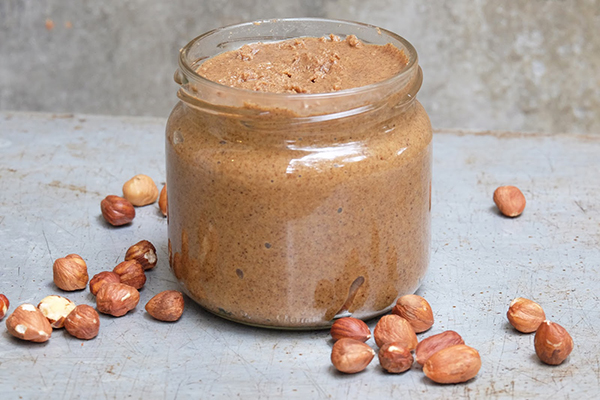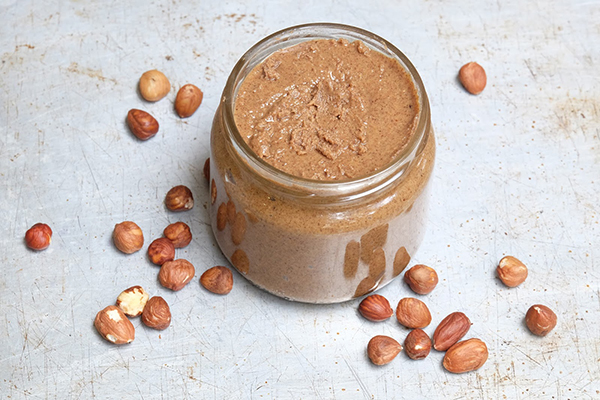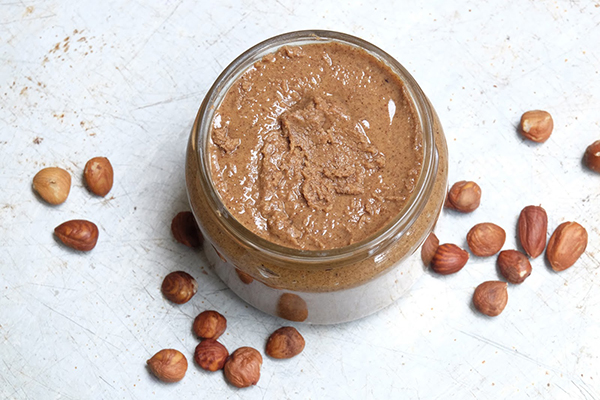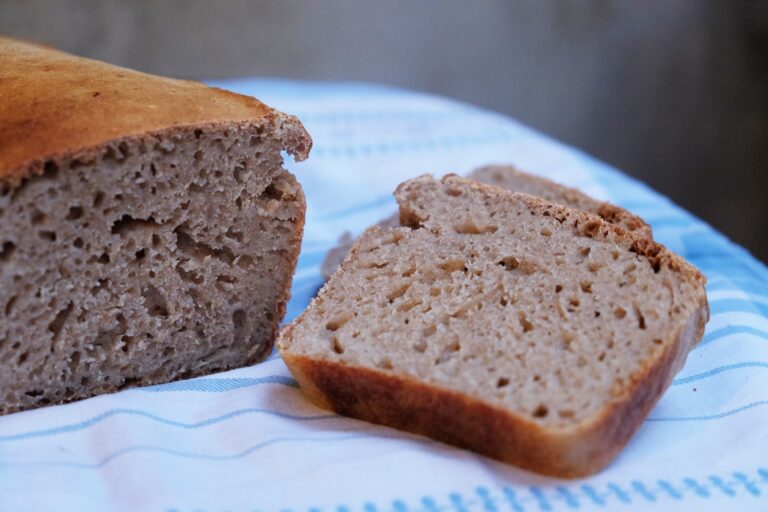How To Make Hazelnut Butter
Home-made hazelnut butter is a great staple in your kitchen – it is easy to make, requires only one ingredient, and tastes great. It can be used in so many ways and is usually much cheaper to make at home than to buy in a store.
You can eat your homemade hazelnut butter with pancakes, use it in smoothies, spread it on a slice of bread, use it in cake recipes, or put some in a bowl of breakfast oats.

Those of you who have been following this blog since the beginning probably remember that it all started with raw food recipes with special care given to food processing that doesn’t destroy micronutrients and makes them as bioavailable as possible.
I do still practice that, but I also think that there is nothing wrong with occasionally putting good taste or simplicity first, as long as we use whole plant foods as ingredients. That is why I am writing a recipe for an amazingly tasty oven-toasted hazelnut butter that you can eat just like that, put it in porridge, dip some fruits or vegetables in it or use it to make some sweets. One ingredient, thousand joys.

Heating the hazelnuts in the oven
The key to getting perfectly smooth and tasty hazelnut butter in a blender or a food processor is baking your hazelnuts properly. And I don’t mean roasting them for a long time or at a high temperature. We don’t want to destroy all of their nutritional properties or have them taste super roasted.
By heating any nuts at a lower temperature, such as 150 °C or lower, you will preserve their delicious taste while still releasing enough of their natural oils to make them easy to blend into a super smooth, buttery spread.

Blending the hazelnuts into a nut butter
To make the hazelnut butter, you will need to blend the roasted hazelnuts in a high-speed blender. Using them while they are still warm will make the blending easier. If your blender has a stick for moving the mixture inside of it, use it
If you don’t have a high-speed blender, you can use a food processor. In that case, it will take a bit longer to get that smooth and easily spreadable consistency. You might need to open the food processor a couple of times to scrape down the hazelnuts from the sides and blend them evenly.
Whether you are using a blender or a food processor, you will need some patience and continue blending until it is very smooth. At first, it will seem really dense and dry; but just continue blending and at some point, you will notice it becomes smooth and oily.
Making other kinds of nut butter
This recipe is good for making other kinds of nut butter too – such as almond butter, peanut butter or cashew butter (or a mix!).
You can also make tahini from sesame seeds this way, but in that case, I would recommend heating the sesame seed in a wide, flat pan over the lowest heat (they are really small, so a pan is an easier option than the oven).
Extra tips (the don’ts)
- Do not add any water! I know that the content of your blender will look a bit dense or dry at first. People often get tempted to add some water, but please trust me and do not do it. Adding water will just make the blending more difficult because the hazelnuts will just absorb the water and it will be impossible to get hazelnut butter that way. The only thing you can add to the blending is some oil, but honestly, no need.
- Unless you have a really strong machine, do not use raw hazelnuts. I don’t even know if such a strong grinder for home use exists – even when I worked as a chef in restaurants with professional equipment, we never had a blender that could make butter from raw hazelnuts. Heating them up to 100-150 °C makes them just perfectly soft for blending without destroying the blender or food processor.
- Speaking of heating the hazelnuts… Don’t bake them at a very high temperature. I know that people normally do it at 180 °C or higher, but there is a high risk of burning them at this temperature. A minute too long can ruin them, and that would be a shame. Baking them at a lower temperature even gives you enough time to tell when they are done by their nice, sweet and nutty smell.
Ideas for using homemade hazelnut butter
- Have it for breakfast on a slice of homemade oat and spelt soda bread or even this delicious spelt sourdough bread if you are feeling more adventurous.
- Combine it with this easy homemade plum jam without added sugar.
- Another super tasty breakfast idea: add it to this chia seed breakfast bowl with apples and plums.
- Have some homemade hazelnut butter with these tasty vegan crepes or fluffy oatmeal pancakes.
- Have you already tried these amazing peanut butter brownies? Why not try them with some homemade hazelnut butter instead? I love that combination perhaps even more than the original!
Homemade Hazelnut Butter

With this recipe, you will learn a super easy way to make your own hazelnut butter at home.
Ingredients
- 500 g raw hazelnuts
Instructions
- Spread the hazelnuts on a baking tray and put them in a cold oven.
- Turn it on to 150 °C and leave for around 25 minutes, until you start to feel the smell of toasted hazelnuts (nutty and pleasant, not burnt).
- They shouldn't turn brown - they should just soften a bit because that way they are much easier to process in a blender (you won't actually be able to see that their texture is softer, but they will definitely be easier to break down). This way, the oil in them will be more easily released, which will make the blending process smoother.
- Take the hazelnuts out of the oven and let them cool down for 10-15 minutes (they should be warm).
- Put them into a blender and blend on high speed until you get a really smooth paste. Use a stick to push the mass closer to the knives and get everything evenly blended.
- Transfer the hazelnut butter into a glass jar and store it in a cool, dry place away from direct sunlight for maximum shelf life.
Notes
Try to get good quality hazelnuts that are naturally tasty and sweet, as they will make the best-tasting hazelnut butter.
In my experience, 500 g (17-18 oz) of hazelnuts is the perfect quantity for blending in a regular-size high-speed blender (mine has a max volume of 2 litres). It can be a bit less than that, but I wouldn't go with less than 350 g (12 oz) of hazelnuts - once they get well-blended and decrease in volume, you will need some bulk to be able to blend them properly.
The same goes for a food processor - don't overload it, but keep in mind that the volume will decrease quite a bit once the hazelnuts are properly ground and start to get broken down into hazelnut butter.








3 Comments